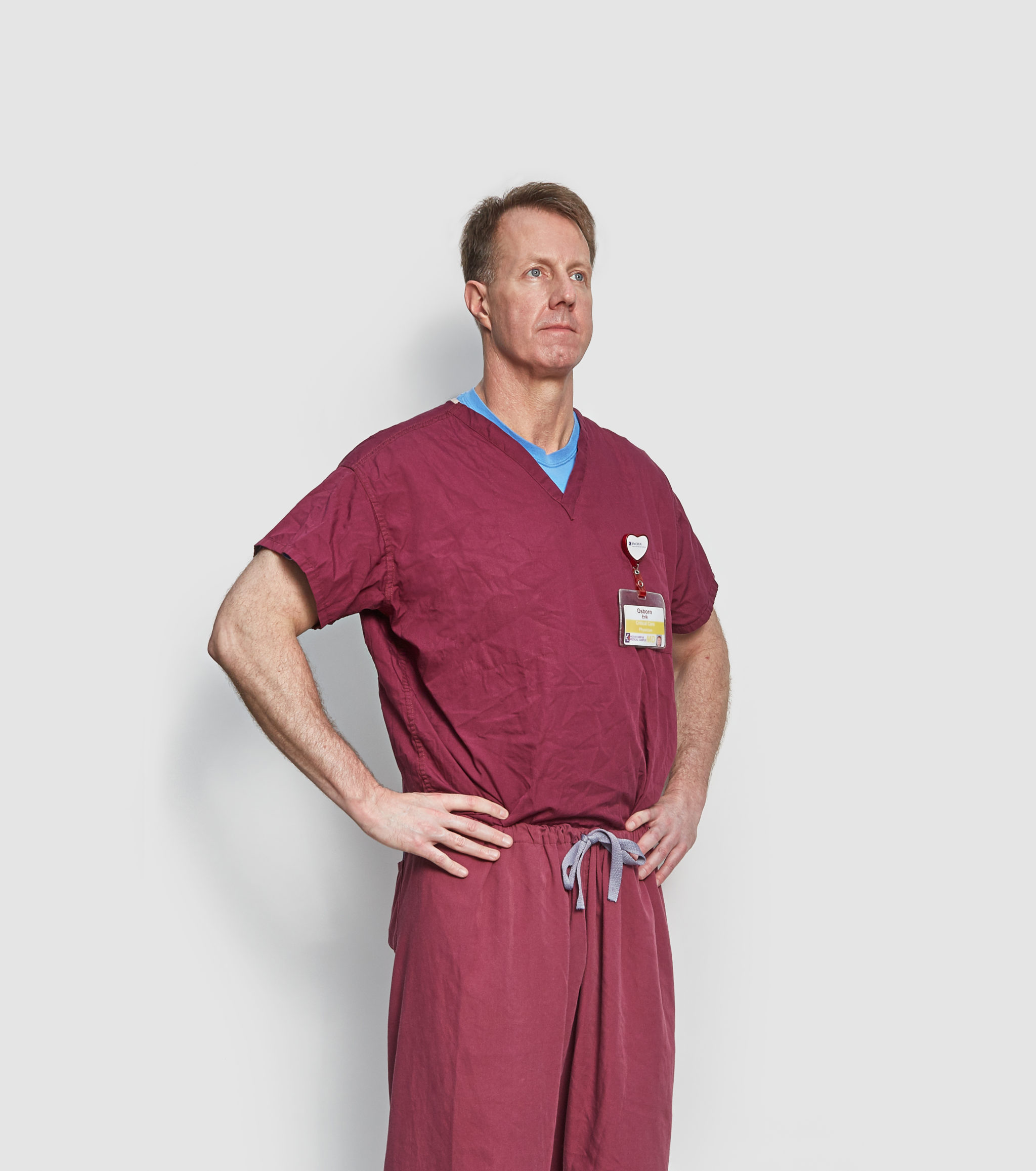This article is part of Washingtonian‘s feature “Heroes of the Crisis.” From medical professionals to social-justice activists to culinary stars, here are some of the people who have helped get us through these most challenging of times. Read about the 15 people making a difference during the pandemic here.
Erik Osborn
Medical director, adult ECMO, Inova Health System
How he’s helping:
Osborn leads the interdisciplinary team of physicians and nurses at Inova Fairfax Hospital who use ECMO—extracorporeal membrane oxygenation, which he describes as a “miniature heart-lung bypass machine”—to support patients suffering from severe cases of Covid-19. ECMO is often the last hope for the most critically ill.
Biggest win:
Any patient who survives is a victory. Osborn mentions one Covid patient who was pregnant while they were treating her. She recovered, and a recent ultrasound showed that the fetus is healthy, which the doctor says is “tremendously thrilling and exhilarating.”
Hardest moment:
Making decisions about whom to treat, given the limited number of patients the ECMO unit can accommodate. “It’s the moral conflict and the moral challenge of having to say no to people. Sometimes we get called with a 45-year-old at one hospital and a 44-year-old at another hospital, and they’re both dying and you’ve got one bed left. But you can’t save everybody. It just hurts.”
Moment of connection:
A patient had been unconscious while on ECMO for a month and endured multiple cardiac arrests. Hour after hour, Osborn and a nurse would ask him to give a thumbs-up, with no response—until one day he opened his eyes. “He looked at me, and we had this connection of two human beings where I knew at that second that he was in there, his brain was working. I saw his right hand lift up his thumb, and as he did that, his eyes smiled and there was a tear that came out of his right eye. He was in there. He was alive.”
Who’s inspiring him:
Osborn’s patients—even when they don’t survive. “Every health-care provider has their own private graveyard. We walk through it alone at night, and the voices of our patients who have expired rise up and become some of our best professors. You end up learning a lot from the patients who don’t make it.”
How he unwinds:
After working double and triple the normal hours at the beginning of the pandemic, Osborn and his team now take a day off every two weeks. “Exercise is really important—and meditation. I play soccer with my sons.”
What he’s looking forward to:
The medical advancements that will emerge from the pandemic. “There’s a spirit of collaboration that’s going to help us achieve things that we may not have been able to achieve before. Great tragedy brings people together and inspires people to do things they may not have otherwise done, and learn things they may not have otherwise learned.”
How the pandemic has changed him:
“I think it’s given me humility—this virus we can’t see is taking the lives of young, healthy people. Being able to help [the ECMO team] feel heard and validated is one of the lessons I’ve learned from this. You want to focus on being optimistic. Sometimes you have to walk through the darkness of negativity, be in there for a while and stumble around in a dark hallway, before you find the light switch.”
This article appears in the October 2020 issue of Washingtonian.


















